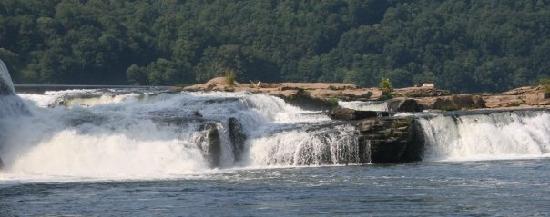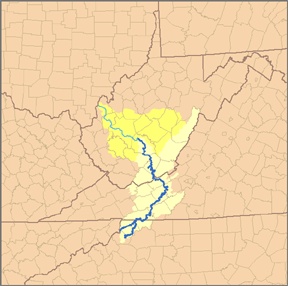The Kanawha River is the major waterway of West Virginia, is a tributary of the Ohio River. It passes through West Virginia, Virginia, and North Carolina and has a major impact on he people living around it. The river is a centerpiece to West Virginian history and its economy of yesterday and today.
This being said, West Virginia is not the only state in charge of managing the river, but is the state that is currently receiving most of the ecological damage. There is not one single authority of this river, other than the federal government; therefore, these states have to work together to find the best management practices. This is not as easy as it seems because politics in each of the states vary, yielding different expectations and visions for the Kanawha. However, this does not have to be a bad thing; in fact, on the Rouge River in Michigan, a study has shown that multiple authorities and practices can actually benefit the river. The Rouge River Project was set up to develop new management practices, standards, treatment, and means for better water quality. It states that there are five stages to creating a Best Management Practice process:
1. Design criteria for BMPs,
2. Assessment of water quality needs by subwatershed,
3. Promotion of the implementation of the most effective BMPs in each subwatershed,
4. Standard protocols for receiving water quality measurements, and
5. Watershed wide monitoring program and data assessment.
This strategy calls for a plan of action, implementation, observation, assessment, and adjusting. This will allow the management to adapt to the changing environment after making strides towards resolving the waste disposal issues present on the Kanawha River today. The article states that this practice proved to be successful in the light of dissolved oxygen improving from 30% to 94% dissolved oxygen standards in just six years. This management practice suggests that tens or even hundreds of individual organizations take authority of the management with one common goal instead of having just one or a few mega-organizations managing the river.
Ecosystem Based Management (EBM) would be a great start to this process because it would allow for some immediate impacts, but more importantly, lasting impacts on the river that could be assessed later on as more organizations become involved in the management. The benefit to many organizations being involved in the management is because it allows for different stakeholders to become directly involved with the management process and practices. EBM would allow the river to recover its flora and fauna more naturally, while also adapting to the different wastes that is currently present in the river. By naturally ratifying the issue, the river could become more resilient to the effects of the toxins in the water, or the EBM could call for the implementation of a foreign species to help with natural detoxification of the river water.
Image:http://en.wikipedia.org/wiki/New_River_%28Kanawha_River%29
Featured Image:http://www.tripadvisor.com/Attraction_Review-g28971-d106818-Reviews-Kanawha_Falls-West_Virginia.html


